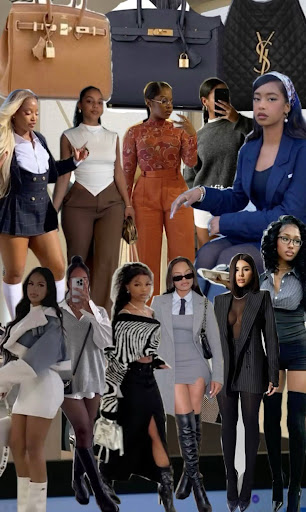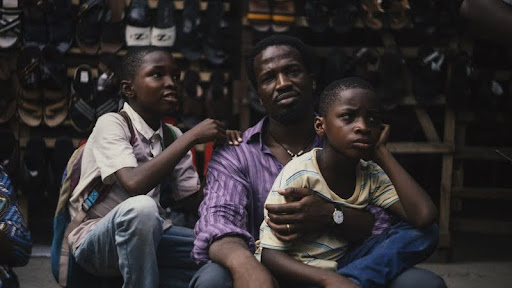
The Price of Our Skin in Africa
Written by Kemi Adedoyin There’s a desire many Africans have. A desire to be lighter, fairer, closer to some imagined ideal of beauty. Across the continent, skin bleaching has become one of the most persistent and polarising issues, an aesthetic decision wrapped in layers of history, economics, self-worth, and global influence. It’s on the shelves of corner shops, stacked next to toothpaste and hair relaxers. It’s whispered in compliments like, “You’ve gotten lighter, what’s your secret?” It’s flaunted on Instagram in curated selfies and heavily-filtered perfection. And perhaps most painfully, it is etched into the skin of countless African women and increasingly, men who risk their health to conform to a standard. But this isn’t only about vanity. It’s about society. About what we’ve internalized, and about the price people pay to belong. Where It All Began Skin bleaching didn’t begin in a beauty salon. It began in the mind. Beyond creams and chemicals, what made dark skin something to fix? Who taught us that lighter was better? And why did that lesson stick? Before most African countries gained their independence, the lighter you were, the closer you seemed to power. Europeans not only dominated political systems but also defined beauty standards. In colonial courts, churches, and schools, whiteness was not just idealized; it was institutionalized. Dark skin became associated with servitude, backwardness, and inferiority. Lightness was aspirational. Darkness was a burden. In post-independence Africa, these hierarchies did not vanish. They mutated. In the decades that followed, the emergence of Western media: films, fashion, and advertising, continued to center Eurocentric features. The African elite, often Western-educated or exposed, became the new standard-bearers of modernity. In many countries, fairer-skinned individuals began to be perceived as more educated, more polished, and more desirable. Even in local TV dramas and music videos, it’s the light-skinned woman who is cast as the love interest, and the light-skinned man who gets the promotion. Over time, bleaching became less about becoming white and more about becoming worthy. It was a ticket, real or imagined, to love, to status, to safety. A way to be seen in a society that often looked right through you if you were dark. It’s no coincidence that many bleaching products are called perfect white, caste, brightening cream, lightening & glow. They are selling more than skin tone. They are selling transformation. The promise of being upgraded. And when society is built to reward lightness, is it any surprise that people start chasing it? Today, this pursuit is no longer just about the colonial hangover. It is fed by modern pressures: class divisions, romantic preference, and even algorithmic bias. The beauty industry thrives on insecurity, and in Africa, it has found a goldmine in skin color. Bleaching by the Numbers According to the World Health Organization, over 75% of Nigerian women use skin-lightening products, with similarly high rates reported in Togo, Senegal, Mali, and South Africa. The global skin-lightening industry is projected to surpass $11 billion by 2026, with a dangerous obsession in Nigeria and Africa contributing a significant share. It is a booming business. From street-side concoctions mixed in plastic bowls to high-end cosmetics branded with pseudo-scientific claims, the market is unregulated and saturated. Creams, soaps, injections, pills, all promising a better version of yourself, if only you were lighter. But the consequences are dire. Prolonged use of hydroquinone, mercury, and corticosteroids, common ingredients in many bleaching products, can cause permanent skin damage, kidney failure, and even cancer. Still, the allure of being light outweighs the fear for many. Beneath the statistics lies a deeper story: one of people who believe they must change their skin to change their fate. The Digital Skin Social media has only made the issue more complicated. Filters blur the lines between skin tone and fantasy. Influencers push lightening products to millions of followers under the guise of skincare. Some celebrities even deny bleaching while visibly altering their appearance over time. Online, a new kind of pressure thrives, one where “glow up” often means “lighten up.” The hashtags may say #melaninmagic, but the algorithms reward Eurocentric beauty. There’s an emerging trend of people using digital enhancement to appear lighter, even when they haven’t physically bleached. In a way, bleaching has evolved from skin-deep to pixel-deep. Even in the digital realm, dark skin is still being airbrushed away. The Path Forward The fight against skin bleaching is not about shaming those who bleach. It is about dismantling the structures, social, historical, and economic, that make bleaching feel necessary in the first place. It’s about teaching our children that beauty is not a spectrum where the lightest always wins. It’s about reforming media and advertising to reflect real African beauty in all its hues. It’s about governments regulating harmful products and holding brands accountable. It’s about conversations in homes, in salons, in churches, on the streets. And perhaps most importantly, it’s about healing. Because skin bleaching is a wound, a painful one, that tells us we are not enough as we are. But we are. To be African is to be many things-resilient, resourceful, radiant. Our skin has survived the sun, war, famine, and myth.









